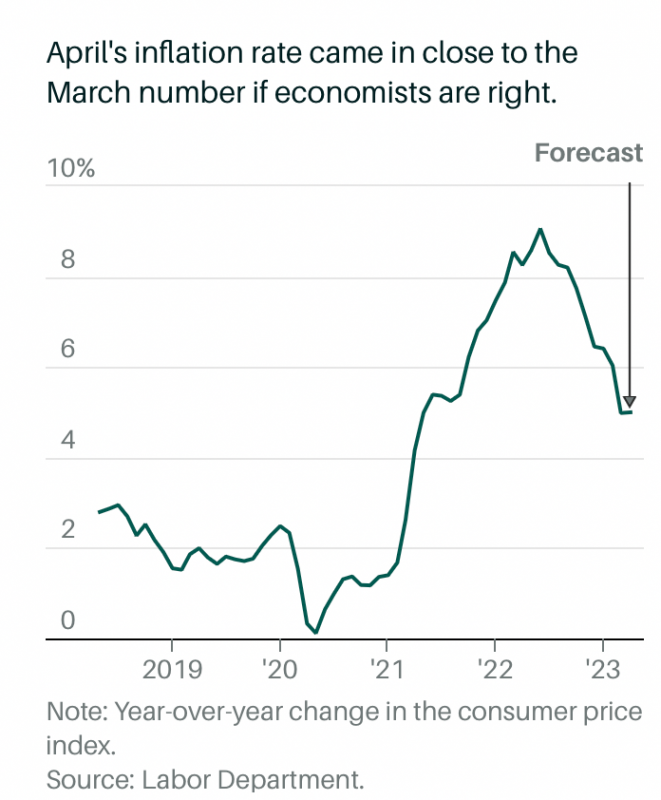Inflation Probably Got Worse in April. Consumer Price Index Formula is a Key.
May 10, 2023

Inflation statistics for April may offer a mixed picture of price increases, with gas prices accelerating in the month while advances in other categories were more moderate, with the consumer price index formula revealing its new data.
The consequence might be an increase in headline inflation but a fall in core inflation, which excludes volatile food and energy indices. Such a disparity suggests that the Federal Reserve’s ten straight interest-rate increases have at least a minor influence on price rise while emphasizing that it will take longer to reduce inflation to the central bank’s 2% annual objective.
Economists predict that inflation will rise 0.4% in April, up from 0.1% the previous month, to match the 5% annual rate recorded in March. However, core prices, which are seen to be a stronger indicator of underlying price inflation, are predicted to rise 0.3% in April, down from 0.4% in March, to reach a 5.4% annual rate, down from 5.6%.
The April report, which is scheduled to be released Wednesday morning, will be the first of two consumer-price-index announcements with its consumer price index formula issued ahead of the Fed’s next meeting on June 13-14. Both will be widely monitored, as central bank officials have stated that they would rely on incoming economic data to determine whether to hike interest rates for the 11th time next month or stop.

What will be important to observe in the April report is which categories are exhibiting the highest strength. A rise in oil prices last month, for example, would not be regarded as a trustworthy forecast of inflation’s future course, given price increase is projected to slow by the time the May report is out.
In April, housing prices are anticipated to have decreased marginally. While economists and the Fed would prefer to see a greater fall than the category has exhibited thus far, they believe that further rent and housing expense relief is on the way.
However, other categories may cause worry. Economists predict that the core services category, excluding housing — a small sector identified by Fed Chairman Jerome Powell as a crucial indicator of where underlying core inflation is heading — will stay strong in April.
And, after declining in recent months, used car prices are likely to climb in April, reversing a trend that might push total price growth higher. A big increase in used vehicle prices may put a halt to recent deflationary pressures in the goods category, which the Fed had cited as proof that its monetary-policy tightening was working.
Because of the persistent strength in the cost of housing and other services, analysts generally expect the April statistics to be higher than expected. This might frighten investors, who are still hopeful the Fed will see enough inflation relief in the coming months to begin decreasing interest rates before the end of the year. However, good statistics in April, particularly depending on the outcome of May’s inflation and job data, may persuade the Federal Open Market Committee to reverse course and boost rates at least once more.
“Solid April and May inflation data released ahead of the June FOMC meeting make notable upward revisions to the Fed’s inflation forecasts very likely in our view,” Citi economists Veronica Clark and Andrew Hollenhorst write. “Higher-than-expected inflation is the key factor leading us to still pencil in higher nominal policy rates this year, with our base case remaining for further rate hikes in both June and July.”
The caveat to that reasoning is that the Fed appears to have already decided to keep rates unchanged at its June meeting. Because of the central bank’s recent adjustment in posture, the bar for what kind of data might prompt authorities to hike rates again may be slightly higher than it was previously. Given that the April jobs data revealed some slowdown in the labor market, one good inflation report may not be enough to justify another raise.
“It is important to keep in mind…that while our forecast would represent a strong inflation print, the Fed has raised the bar for additional rate increases,” says Alex Pelle, a U.S. economist with Mizuho Securities USA.
The Labor Department will release April CPI data at 8:30 a.m.




